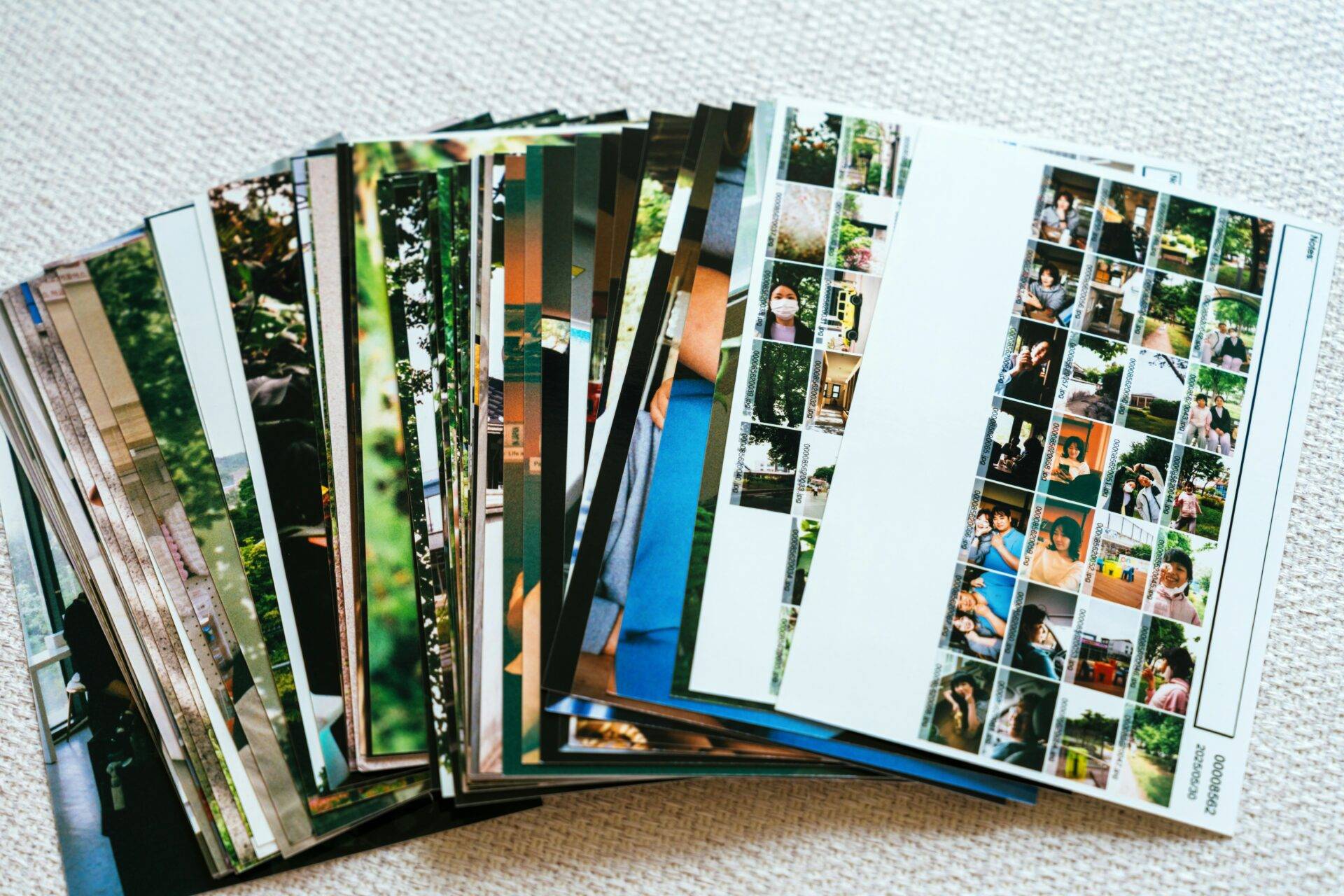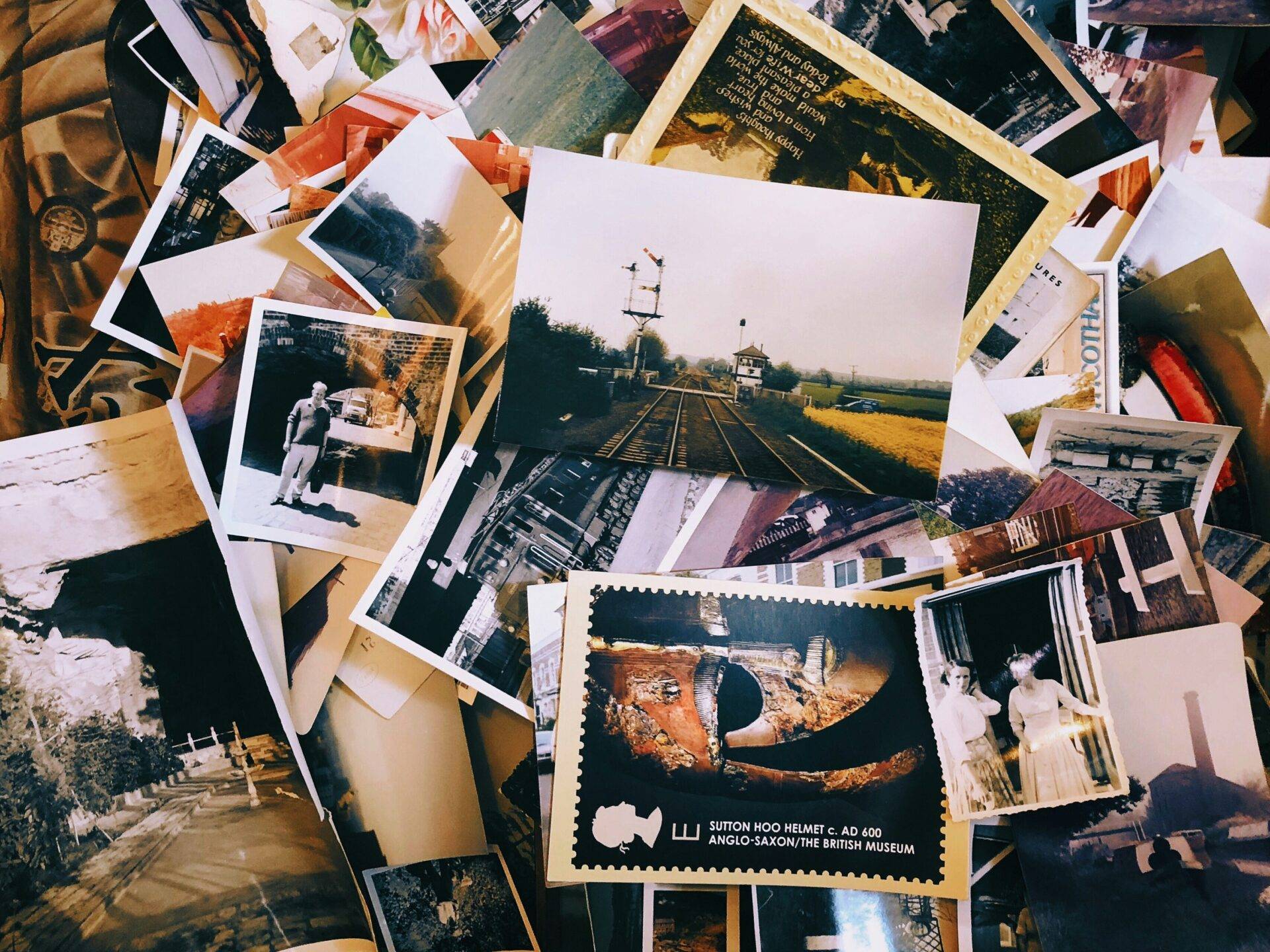Welcome to our comprehensive guide on newborn photography! Whether you’re a beginner looking to capture those early moments or an experienced photographer wanting to enhance your skills, this article is packed with valuable information and tips to help you create stunning and timeless images of precious newborns.
From choosing the right camera with good resolution and autofocus, to selecting lenses that perfect composition, we’ll cover all the essential equipment needed for newborn photography. We’ll also explore the significance of lighting in creating ambiance, the importance of props in adding personality, and the role of editing software in polishing images.
But it doesn’t stop there. We’ll delve into versatile backdrops and setups that add aesthetic appeal and diversity to your photoshoots. And because investing in quality education is crucial for growth, we’ll provide insights on how you can improve your skills through online courses, workshops, and mentorship programs.
Welcome to my ultimate guide on newborn photography gear! Whether you’re a parent eager to capture your little one’s first days or a photographer stepping into the world of newborn portraits, this post will walk you through everything you need — from cameras and lenses to lighting, props, and editing tools. As a professional newborn photographer in Minnesota for over 20 years, I’m here to help you create stunning, timeless images that celebrate these fleeting, beautiful moments.
Why Read This Article?
- Learn how to choose the right camera with good resolution and autofocus for capturing precious moments.
- Discover tips for achieving beautiful bokeh and shallow depth of field in your newborn shots.
- Find out which lenses are best suited for different types of newborn photography.
- Explore lighting equipment options that create ambiance while highlighting delicate features.
- Get ideas on incorporating meaningful props into your setups for personalized photoshoots.
- Understand the importance of versatile backdrops in enhancing aesthetics and versatility.
- Gain insights into popular editing software tools used by photographers worldwide.
- Discover why investing in quality education is vital for honing your skills as a newborn photographer.
So whether you’re just starting out or looking to take your skills to new heights, this guide is your go-to resource for capturing those precious moments and creating timeless memories through newborn photography. Let’s dive in!

Cameras for Capturing Precious Moments
Choose the Right Camera with Good Resolution and Autofocus
When it comes to capturing precious moments, having the right camera is crucial. For breathtaking photos that truly capture the essence of the moment, a camera with good resolution and autofocus is essential.
Resolution refers to the number of pixels that make up an image. The higher the resolution, the more detail the camera can capture. This is particularly important when you want to print out your photos in large formats or crop them without losing quality.
Autofocus is another key feature to consider. It ensures that your photos are sharp and in focus, even when capturing fast-moving subjects or in challenging lighting conditions. A camera with reliable autofocus will help you nail those perfect shots every time.
Consider Low-Light Performance for Indoor Newborn Shots
Indoor newborn photography often involves low-light conditions, as you may want to capture those tender moments without using harsh artificial lighting. When choosing a camera for indoor newborn shots, consider its low-light performance.
A camera with good low-light performance will be able to produce clear and noise-free images even in dimly lit environments. Look for cameras with larger sensors and wider aperture lenses, as these can let in more light and create stunning images in challenging lighting situations.
Recommended Camera Models for Beginners and Advanced Photographers
For beginners just starting their photography journey, entry-level DSLRs or mirrorless cameras are great choices. These cameras offer a good balance of image quality, ease of use, and affordability. Some popular models for beginners include the Canon EOS Rebel T7i and the Nikon D3500.
For advanced photographers looking to take their skills to the next level, pro-level DSLRs or mirrorless cameras provide more advanced features and controls. Cameras like the Nikon D850 and the Sony Alpha a7R IV offer top-notch image quality, speed, and customization options for professional photographers.
- Canon EOS Rebel T7i: A great entry-level DSLR with good image quality and user-friendly features.
- Nikon D3500: Perfect for beginners, this camera offers excellent image quality and easy handling.
- Nikon D850: A pro-level DSLR with high-resolution capabilities and advanced features for seasoned photographers.
- Sony Alpha a7R IV: A mirrorless camera that delivers exceptional image quality and performance for professionals.

Lenses for Perfecting Composition
Selecting the Right Lenses for Newborn Photography
When it comes to capturing the delicate beauty of newborn babies, choosing the right lenses is crucial for achieving perfect composition in your shots. Different types of newborn photography require different lenses to bring out the best in your subjects.
- Macro Lens: For those adorable close-up shots that highlight every tiny detail of a newborn, a macro lens is indispensable. Its ability to capture minute details like tiny fingers and toes makes it a popular choice among newborn photographers.
- Telephoto Lens: Ideal for capturing intimate moments from a distance without disturbing the baby, a telephoto lens is great for candid shots or capturing expressions in a natural and unobtrusive way.
- Wide-Angle Lens: Perfect for capturing the nursery environment or for group shots that include both the baby and the surroundings, a wide-angle lens adds context and depth to your newborn photography.
Popular Choices: Prime vs. Zoom Lenses
When it comes to choosing lenses for newborn photography, prime and zoom lenses are two popular options that cater to different needs and styles.
- Prime Lenses: Known for their sharpness, clarity, and ability to create beautiful bokeh, prime lenses have a fixed focal length, which encourages photographers to move around and find the best angles for their shots.
- Zoom Lenses: Offering versatility and convenience, zoom lenses allow photographers to quickly adjust the focal length without changing lenses. They are great for capturing a variety of shots without the need to constantly switch lenses.
Tips for Achieving Beautiful Bokeh and Shallow Depth of Field
One of the keys to perfecting composition in newborn photography is creating a beautiful bokeh effect and achieving a shallow depth of field that keeps the focus on the baby while blurring the background.
- Wide Aperture: Use a lens with a wide aperture (such as f/1.8 or wider) to create a shallow depth of field that separates the baby from the background and adds a dreamy, ethereal quality to the images.
- Focus on the Eyes: When shooting newborns, focus on their eyes to create a connection with the viewer and draw attention to the most expressive part of the baby’s face. A shallow depth of field will make the eyes pop in the photo.
- Experiment with Angles: Get creative with your compositions by trying different angles and perspectives. Shooting from above, at eye level, or from the side can all lead to unique and captivating shots.
- Use Natural Light: Whenever possible, opt for natural light when photographing newborns. Soft, diffused light can enhance the baby’s features and create a gentle, flattering glow in the images.

Lighting Equipment for Creating Ambiance
Significance of Lighting in Newborn Photography
In newborn photography, lighting plays a crucial role in capturing the delicate features and innocence of a newborn baby. The right lighting can enhance the mood of the photo, highlight the baby’s features, and create a soft and dreamy atmosphere. Proper lighting helps in bringing out the warmth and tenderness associated with newborns, resulting in beautiful and timeless images that families cherish for a lifetime.
Types of Lighting Equipment
There are several types of lighting equipment that photographers can use to create the perfect ambiance for newborn portraits:
- Natural Light: Natural light is a popular choice for newborn photography as it produces soft and flattering results. To utilize natural light effectively, photographers often position the baby near a large window where the light is diffused and gentle. This type of lighting creates a beautiful, ethereal look in newborn portraits.
- Studio Lights: Studio lights provide photographers with full control over the intensity and direction of light, allowing them to create the desired ambiance for the photoshoot. Continuous lights or strobes can be used to create a variety of lighting effects and enhance the mood of the images.
- Modifiers: Light modifiers such as softboxes, umbrellas, and reflectors help photographers manipulate and shape the light to achieve the desired look. Softboxes produce a soft and even light that is ideal for newborn portraits, while umbrellas can create a more diffused and natural-looking light. Reflectors are used to bounce light back onto the subject, filling in shadows and enhancing the overall lighting setup.

Tips for Achieving Soft, Flattering Light for Newborn Portraits
Creating soft and flattering light is essential for capturing beautiful newborn portraits. Here are some tips to help you achieve the perfect lighting setup:
- Use Soft Light Sources: Opt for soft and diffused light sources such as natural light or softboxes to avoid harsh shadows and create a gentle, flattering glow on the baby’s skin.
- Position the Baby Carefully: Place the baby at a slight angle to the light source to create a soft, dimensional look. Avoid direct overhead light, which can result in unflattering shadows.
- Consider the Time of Day: If using natural light, schedule the photoshoot during the golden hours of early morning or late afternoon when the light is warm, soft, and directional.
- Use Reflectors to Fill in Shadows: When working with artificial light sources, use reflectors to bounce light back onto the baby and fill in any undesirable shadows, creating a more even and flattering lighting setup.
- Avoid Harsh Lighting: Steer clear of harsh, direct light that can cause the baby to squint or create unappealing shadows. Opt for soft and gentle lighting that enhances the baby’s features without overwhelming them.
Props and Accessories for Personalization
Importance of Props in Adding Personality to Newborn Shots
Props play a crucial role in enhancing the visual appeal of newborn photography. They not only add charm and character to the photos but also help in creating unique and memorable images that reflect the individuality of each newborn. By incorporating carefully selected props, photographers can personalize the photo sessions, making them more meaningful and special for both the parents and the baby.
Essential Props: Wraps, Blankets, Baskets
When it comes to newborn photography, some props are considered essential for creating beautiful and captivating shots. Wraps are versatile props that can be used to swaddle the baby or add texture and color to the composition. Soft blankets provide a cozy and comfortable setting for the newborn, allowing them to peacefully sleep during the photo session. Baskets are another popular prop that adds a rustic and charming element to the photos, creating a visually pleasing contrast against the softness of the baby’s skin.
Tips for Incorporating Meaningful Props into Newborn Setups
- Keep it Simple: Avoid overwhelming the photo with too many props. Focus on a few key pieces that complement the baby without stealing the spotlight.
- Personalize with Meaningful Props: Choose props that hold significance or sentimental value to the family. This could be a handmade blanket, a family heirloom, or items that represent the parents’ hobbies or interests.
- Coordinate Colors and Textures: Ensure that the props harmonize with the overall color scheme and theme of the photo session. Consider the textures of the props and how they interact with the baby’s soft skin.
- Consider Safety First: Prioritize the safety and comfort of the newborn when selecting props. Avoid using props that could pose any risk of harm or discomfort to the baby.
- Capture Authentic Moments: Use props to enhance the story-telling aspect of the photos. Whether it’s a tiny bonnet or a miniature toy, props can add narrative elements that make the images more engaging and emotive.
By understanding the importance of props, incorporating essential items like wraps, blankets, and baskets, and following these tips for meaningful prop usage, photographers can elevate their newborn photography to new heights, creating stunning images that capture the essence and uniqueness of each precious newborn.
Backdrops and Setups for Versatility
Newborn photography is all about capturing precious moments of a baby’s early days. One key aspect that can significantly enhance the aesthetics and versatility of newborn photography is the choice of backdrops and setups. In this blog section, we will explore the importance of versatile backdrops, different backdrop options, and tips for creating visually appealing setups for newborn sessions.
Importance of Versatile Backdrops in Newborn Photography
Versatile backdrops play a crucial role in newborn photography as they set the tone and mood for the entire photo session. By using a variety of backdrops, photographers can create different looks and styles, catering to the preferences of the parents and adding diversity to the final collection of images.
Moreover, versatile backdrops allow photographers to customize the background according to the theme or color scheme chosen for the session. Whether it’s a soft and dreamy setup or a vibrant and colorful one, the backdrop serves as a canvas that enhances the overall visual impact of the photographs.
Backdrop Options: Fabric, Paper, Digital Backdrops
When it comes to backdrops for newborn photography, photographers have various options to choose from. The most common backdrop materials include fabric, paper, and digital backdrops, each offering unique advantages and creative possibilities.
- Fabric Backdrops: Fabric backdrops are popular for their versatility and texture. They come in a wide range of colors, patterns, and textures, allowing photographers to create different looks by simply changing the backdrop.
- Paper Backdrops: Paper backdrops are convenient and cost-effective. They are available in solid colors as well as artistic designs, making them suitable for both simple and elaborate setups.
- Digital Backdrops: Digital backdrops provide endless creative opportunities. Photographers can use editing software to seamlessly integrate digital backdrops into their images, creating composite photos with captivating scenes and themes.
Tips for Creating Visually Appealing Setups for Newborn Sessions
Creating visually appealing setups for newborn sessions requires attention to detail and creativity. Here are some tips to help photographers enhance their setups:
- Choose Soft and Neutral Colors: Soft and neutral colors like pastels, creams, and light grays create a gentle and soothing atmosphere, ideal for newborn photography.
- Use Textured Fabrics: Adding textured fabrics such as knits, wools, and mohair can bring depth and interest to the setup, adding a tactile element to the photos.
- Incorporate Props Sparingly: While props can enhance the theme of the photos, it’s essential not to overpower the newborn. Use props sparingly and ensure they complement the baby rather than distract from them.
- Experiment with Lighting: Lighting plays a crucial role in setting the mood of the photos. Try different lighting setups, such as natural light, soft diffused light, or dramatic shadows, to create varied effects.
- Capture Details and Close-Ups: Don’t forget to capture close-up shots of the baby’s tiny features like fingers, toes, and eyelashes. These intimate shots add depth and emotional connection to the photos.
By incorporating versatile backdrops, choosing the right materials, and paying attention to details, photographers can create stunning and memorable newborn photography setups that beautifully capture the innocence and beauty of the newborn stage.
Editing Software for Polishing Images
Role of Editing Software in Enhancing Newborn Photos
Editing software plays a crucial role in enhancing newborn photos by allowing photographers to refine and perfect the images captured during a photoshoot. When it comes to newborn photography, attention to detail is key. Editing software provides photographers with the tools needed to adjust lighting, colors, and composition to create stunning and flawless images of precious newborns.
Newborns are delicate and require gentle handling during photoshoots. Sometimes, despite the best efforts of the photographer, factors like lighting conditions or slight imperfections in the background can impact the overall quality of the image. This is where editing software comes in, offering features that can help touch up and enhance newborn photos without compromising the natural beauty of the subject.
Popular Editing Programs and Tools for Photographers
There are several popular editing programs and tools that are widely used by photographers to polish and enhance their images, including those of newborns. These tools offer a wide range of capabilities and features to cater to the specific needs of photographers, ensuring that they can achieve their desired results with precision and efficiency.
- Adobe Photoshop: Adobe Photoshop is a versatile and powerful editing program that is favored by many photographers for its advanced editing capabilities. With features like layers, masks, and filters, photographers can make intricate adjustments to newborn photos to bring out the best in each image.
- Lightroom: Adobe Lightroom is another popular choice among photographers, known for its intuitive interface and efficient workflow. Lightroom offers a range of editing tools specially designed for photographers, making it easy to enhance newborn photos while maintaining a consistent editing style.
- GIMP: GIMP is a free, open-source editing program that provides photographers with a comprehensive set of tools for image retouching and enhancement. While it may not have all the advanced features of paid software, GIMP is a great option for photographers looking to edit newborn photos on a budget.
Tips for Achieving Consistent Editing Style for Newborn Portraits
Consistency in editing style is essential for creating a cohesive and professional-looking portfolio of newborn portraits. Here are some tips to help photographers achieve a consistent editing style:
- Develop a Signature Look: Define a signature editing style that reflects your creative vision and the aesthetic you want to achieve in your newborn portraits. Whether it’s bright and airy, soft and muted, or rich and vibrant, having a consistent look will help create a sense of cohesion in your body of work.
- Create Custom Presets: Use editing software to create custom presets that align with your signature style. By saving and applying these presets to your newborn photos, you can ensure that each image maintains a consistent look and feel, streamlining your editing process.
- Pay Attention to White Balance: White balance plays a crucial role in the overall look of an image. Ensure that the white balance is consistent across all your newborn photos to avoid color discrepancies and maintain a uniform editing style throughout your portfolio.
- Refine Your Editing Techniques: Continuously refine and improve your editing techniques to achieve the desired level of consistency in your newborn portraits. Experiment with different tools and effects in your editing software to enhance your skills and develop a polished editing style.
Investing in Quality Education and Resources
In the ever-evolving world of newborn photography, continuous learning is key to staying at the top of your game. As a newborn photographer, investing in quality education and resources is essential for honing your skills, expanding your knowledge, and growing your business. Whether you are a newbie in the field or a seasoned pro, there is always room for improvement and growth through education.
Online courses, workshops, and mentorship programs are invaluable resources that can provide you with the tools, knowledge, and inspiration needed to take your newborn photography to the next level. These learning opportunities offer a platform for you to learn new techniques, refine your style, and stay updated on the latest trends in the industry.
When it comes to investing wisely in education to improve your photography skills, there are a few tips to keep in mind. Firstly, do thorough research on the courses or programs you are interested in to ensure they align with your goals and learning style. Look for reputable instructors or mentors who have a track record of success and can offer valuable insights and guidance.
Additionally, consider the value that the education or resource will bring to your photography business. Will it help you attract more clients, increase your revenue, or enhance your portfolio? Investing in education should ultimately contribute to the growth and success of your business in a meaningful way.
Furthermore, be strategic in your investments by budgeting for education expenses and prioritizing the areas where you need the most improvement. Whether it’s mastering lighting techniques, editing skills, or business marketing strategies, focus on areas that will have the biggest impact on your photography business.
Lastly, don’t underestimate the power of networking and building relationships within the photography community. Engage with fellow photographers, participate in forums or social media groups, and seek out mentorship opportunities to learn from others in the field. Collaborating with and learning from peers can offer valuable insights and support as you continue to grow as a newborn photographer.





